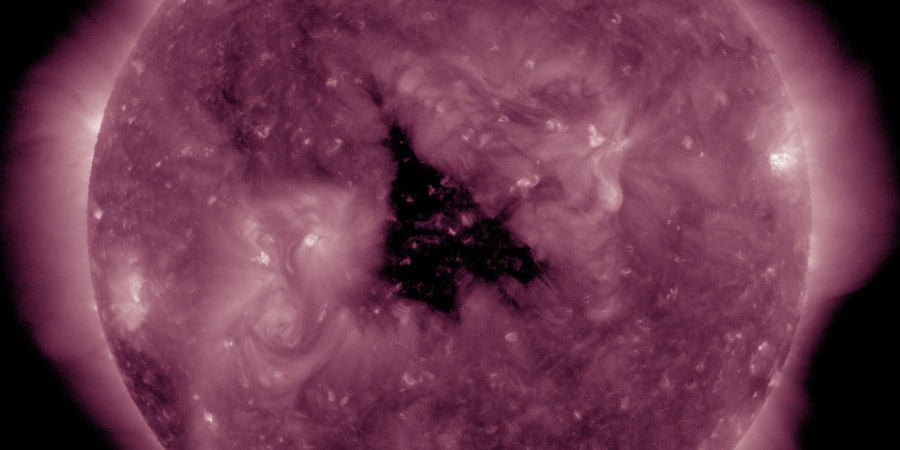Coronal hole faces Earth
Wednesday, 28 December 2016 12:00 UTC

The solar wind speed is finally dropping back down to ambient levels after being enhanced for well over a week. This was of course due to a massive coronal hole. However, we are likely soon going to see yet another uptick in geomagnetic activity because we have a coronal hole facing our planet today.
A coronal hole is facing Earth. Enhanced solar wind could arrive in ~3 days - Follow live on https://t.co/T1Jkf6i4Cb pic.twitter.com/EFhOcCzpy7
— SpaceWeatherLive (@_SpaceWeather_) 28 december 2016
Our automated coronal hole detection system reported the coronal hole this morning on our Twitter channel. Be sure to follow us at @_SpaceWeather_ if you do not want to miss out on the most complete space weather alert system available!
This coronal hole is located near the solar equator so we should see some decent effects once the solar wind stream arrives at our planet. We can not really tell you what kind of geomagnetic activity this coronal hole managed to cause during the last solar rotation because... it barely existed one month ago! Take a look at this image in our archive from 28 days ago. You see that tiny black area in the middle there? That's the coronal hole as it looked like during the last solar rotation! Not much too speak of indeed... and it did not cause any kind of geomagnetic disturbance worth mentioning. So yeah, this is a fairly new coronal hole that has been in a phase of growth during the past few weeks.
So what should we expect? Well, it is likely that we are going to see the first effects of this solar wind stream in about 48 to 72 hours from now. That would be late on 30 December or 31 December. The solar wind stream from this coronal hole should be very geoeffective due to its origin near the solar equator. Active geomagnetic conditions (Kp4) are likely when the solar wind stream arrives but an isolated period of minor G1 geomagnetic storming can not be excluded.
Fireworks and aurora? Not totally impossible for those at high latitude locations!
Thank you for reading this article! Did you have any trouble with the technical terms used in this article? Our help section is the place to be where you can find in-depth articles, a FAQ and a list with common abbreviations. Still puzzled? Just post on our forum where we will help you the best we can!
Latest news
Latest forum messages
Support SpaceWeatherLive.com!
A lot of people come to SpaceWeatherLive to follow the Sun's activity or if there is aurora to be seen, but with more traffic comes higher server costs. Consider a donation if you enjoy SpaceWeatherLive so we can keep the website online!

Space weather facts
| Last X-flare | 2024/03/28 | X1.1 |
| Last M-flare | 2024/04/19 | M2.1 |
| Last geomagnetic storm | 2024/04/16 | Kp5 (G1) |
| Spotless days | |
|---|---|
| Last spotless day | 2022/06/08 |
| Monthly mean Sunspot Number | |
|---|---|
| March 2024 | 104.9 -19.8 |


